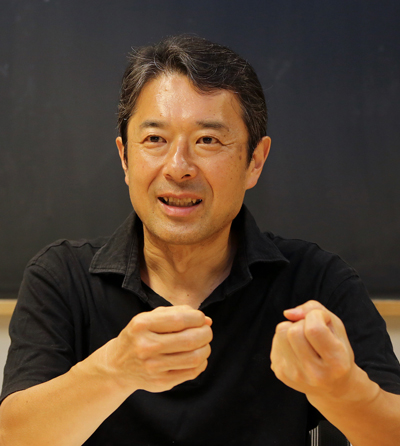President's Message
日本語
Kouji Ohta (Kyoto University)
President, Astronomical Society of Japan
June 2025
I have been conducting observational studies of galaxies mainly by visible, infrared, and radio observations, and have also worked on active galactic nuclei and their co-evolution with supermassive black holes. Recently, I have also been interested in multi-messenger astronomy. When I was appointed vice president of the Astronomical Society of Japan (hereafter ASJ) in 2021, I said, "OK. I believe this is my last service to ASJ," but it was not. I am unsure if I will be able to fulfill the heavy responsibilities of the presidency, but with your helps, I will do my best for the further development of ASJ.
It was in May 1984, in Chofu, Tokyo, that I first joined the annual meeting of the Society. At that time, there were already two parallel sessions. Nowadays, about 10 sessions are held simultaneously, which is quite an increase. On this occasion, I read an article in the "Astronomical Herald" (1982, No. 9, Tsubaki, Nakao). It listed the number of oral talks in the annual meetings and the number of ASJ members from 1960 to 1980. Both numbers had increased over the past 20 years, and interestingly, the article contained a linear fit equations for the increase in the number of talks and membership. The fitting result shows the total number of oral presentations at the spring and autumn meetings is described as "9.88 (AD year-1960) + 113.2. " If I extrapolate this to 2024, the number is 745 per year. Currently, there are three different presentation styles (oral presentation, poster presentation with short talk, and poster presentation without talk), including presentations via Zoom, so a simple comparison is difficult. Nevertheless, the total number of presentations over the past several years has ranged from 1,100 to 1,300 per year. This indicates that a larger number of research results have been presented as compared with the extrapolated number.
How about the number of members? From 1960 to 1980, the number of special members (corresponding to full members today) was fitted as "16.36 (AD year-1960) + 202.2." Extrapolating this to 2024 yields 1,249, while the number of current full members as of March 31, 2024, is 2,314. This shows that the growth over the past 20 years has been much greater than predicted. (It might be interesting to consider the specific number of presentations per member.)
The period from 1960 to 1980 was a time of great development in astronomy, and the development of ASJ in the following 40 years seems to have exceeded this period. Moreover, the development seems to be more than just in numbers. Looking at the titles of the sessions and the contents of the presentations, the expansion of research subjects and fields is also impressive. Research on exoplanets and their environments has also made remarkable progress, and the boundary area with geophysics and other fields seems to be developing. Moreover, it is expected to lead to the study of extraterrestrial life and to collaborate with the field of biology. In addition, research on the universe using gravitational waves and ultra-high energy neutrinos has begun and is also progressing in collaboration with conventional astronomy. The term "multi-messenger astronomy" refers to astronomical research using not only electromagnetic waves but also various other "messengers" from the universe. (I think cosmic rays and meteorites are also messengers, but this term seems to have come into use recently.) Observations of distant galaxies are also being made with the goal of unveiling the nature of the mysterious dark energy. In this way, it seems that research in collaboration with various fields is progressing. It is expected that the future of astronomy will develop more and more widely through such collaboration with neighboring fields. Unexpected new fields may open up. ASJ needs to support such progress.
It is also important to disseminate these results to the public and to foster the next generation of researchers. Article 4 of the ASJ articles of incorporation states, "The purpose of the Society is to promote and disseminate astronomy." We have been conducting public lectures accompanying the annual meeting, the Tanabata lectures, introduction of lecturers, and the Internet Astronomy Dictionary, and so on. These activities contribute to achieving this purpose and should continue to be actively pursued in the future. The Junior Session has been held at the (mainly) Spring Annual Meeting and has a 25-year history. I have only recently attended a few times and have been very impressed by the unique and varied research topics and enthusiastic efforts of the high school students.
We must continue to make progress in these activities of ASJ―of course, PASJ, the Astronomical Herald, and other activities not mentioned here are also very important. Looking back at these developments, it is clear that efforts of ASJ members are of the utmost importance. I appreciate your cooperation very much in advance.
